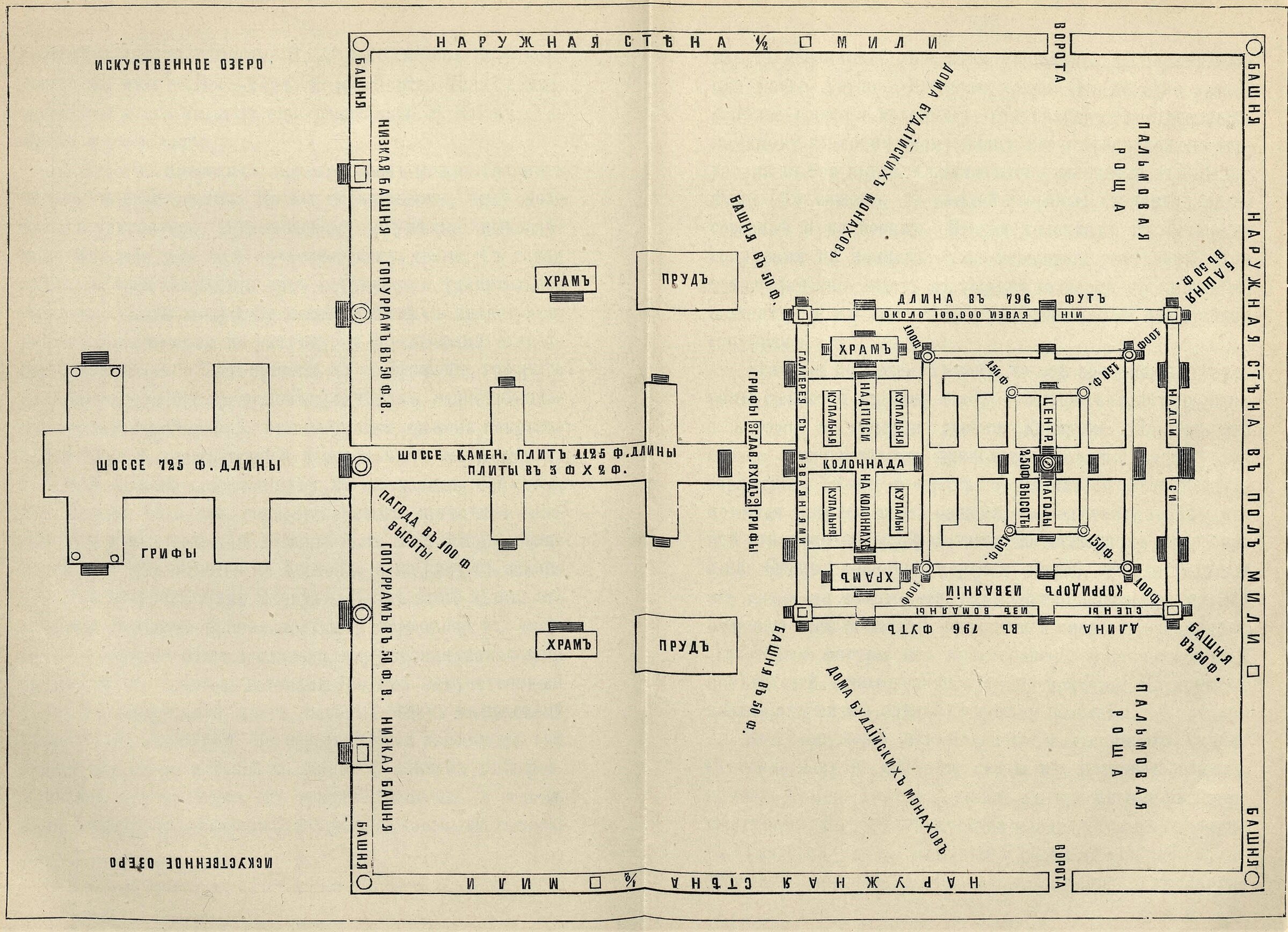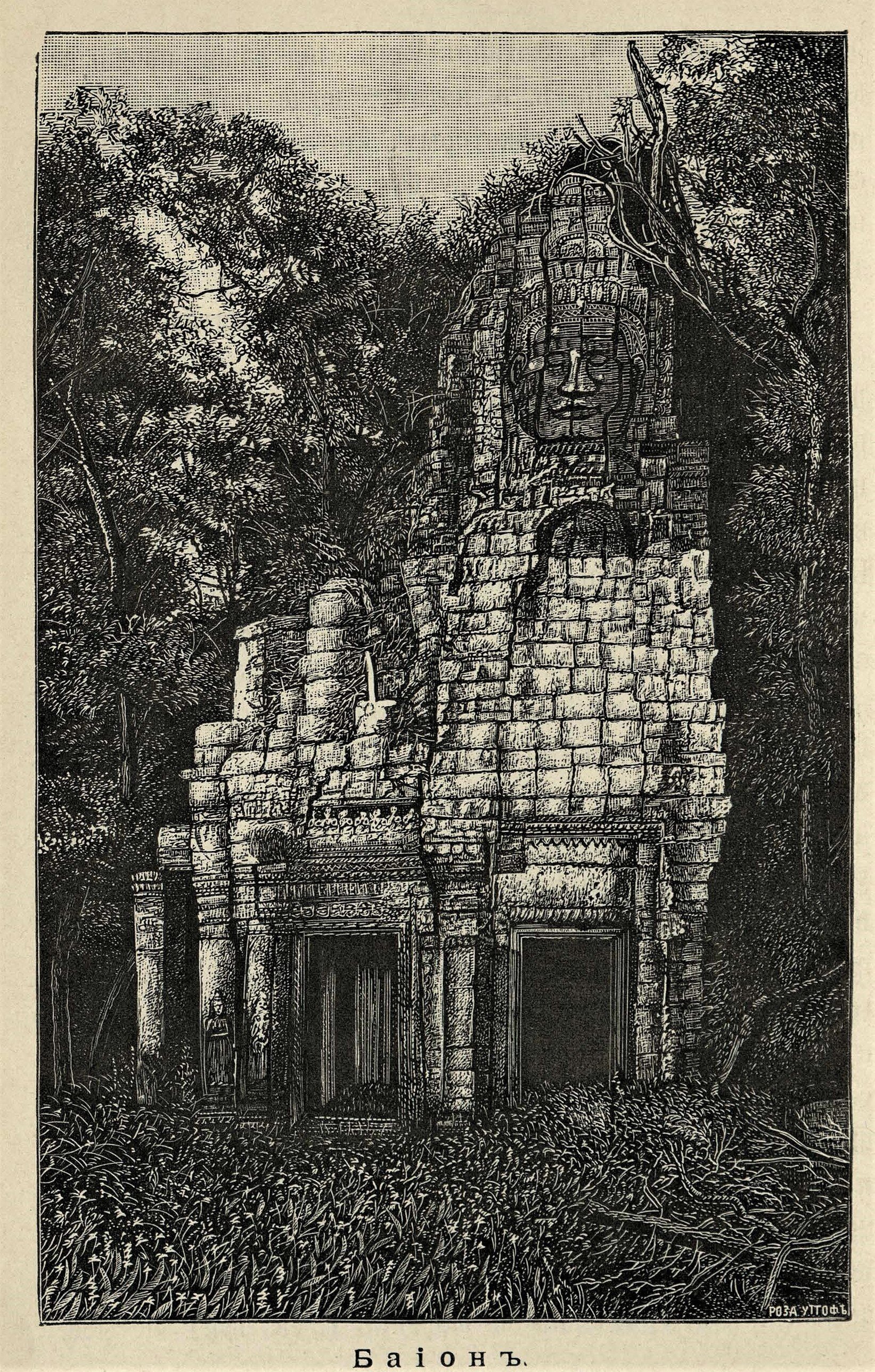По белу свету : путевые заметки - Камбоджа | Around the World: Travel Notes - Cambodia
by Grigory de Vollan
One of the first Russian extensive accounts of Cambodia at the end of the 19th century, by erudite and diplomat G.A. de Vollan

- Format
- e-book
- Publisher
- Обществен. польза, St. Petersburg, Vol. 2, pp 197-299
- Edition
- Национальной Электронной Библиотеки, Rusneb, www.rusneb.ru | Angkor Database
- Published
- 1895
- Author
- Grigory de Vollan
- Pages
- 112
- Language
- Russian
In the second volume of ‘travel notes’ (the first one had been covering Spain, Egypt, Ceylon and India, China, Japon), Russian traveler Grigory de Vollan reflects on his visits to Burma (chap. I, 25 pages), Penang and Singapore (II, 9 pages), Sumatra and Batavia (III-IV, 32 pages), Saigon-Hong Kong-Macao-Shanghai-Haiphong – Annam-Tonkin-Saigon (34 pages), Laos and Siam (XVIII-XIX, 10 and 70 pages), Cambodia being the most commented destination since it gets 102 pages (XII to XVII).
That his Southeast Asian journey had started in Burma (Myanmar) and Siam (Thailand) is not surprising: these two countries were on the top of the list of Russian diplomacy in the attempt of expanding Russian influence in the Far East. Yet again, it is Cambodia, and the ruins of Angkor, that particularly captivated the diplomat-traveler.
The Cambodian part opens with a description of Phnom Penh (which he reached on Jan. 4, 1892, explaining that the name meant “гора изобилия” (gora izobilya, mountain of abundance) and a documented synthesis of the history of the Khmer civilization. The author’s sources are the works by Louis Delaporte, Abel Rémusat and Dr. Bastian, and largely the books by Chinese envoy Zhu Daguan (the name is spelled in the book as Tchou da-Gou’an, Чжоу да-Гуан), which he quotes at length from the Russian translation by a P. K. Rudanovsky (П.К.Рудановскии) (1).
He was also aware of the American Frank Vincent’s book The Land of the White Elephant, gently criticizing the author for inaccurately describing the residence of the Siem Reap governor. As for Angkor itself, his admiration is immense, as he writes that it is “an architectural achievement testimony of the human race genius such as the Parthenon, Balbeck, Luxor or Madura”.
Among the many specificities of this relation, we shall note:
- De Vollan apparently reached Siem Reap from Kratie and Stung Treng, going back to Phnom Penh through Battambang,the latter being the usual way for foreign travelers those days.
- He made sure to visit Angkor Borei, in line with his interest for pre-Angkorian times.
- Far from limiting his interest to Angkor, he mentioned Preah Kanh, [Beng] Melea, Pontea-Tchna [probably Banteay Chhmar], Bayon, Ta-Phrom…
(1) In a footnote, the author expresses his “gratitude” to this P.K. Rudanovsky, referring to his doctoral thesis, ‘Historical and Geographical Description of the Kingdom of Cambodia’ (Историческое-географическое описание королевства Камбоджи). Russian researchers, and Angkor Database, have been looking for this document, to no avail so far.
‘Outer walls are half-mile long’ each side, noted G.A. de Vollan in his own Angkor Wat map.
- Read the ebook.
- email hidden; JavaScript is required, including parts on Siam, Annam, Java, Laos…
- About the title: По белу свету (Po Byelu Svetu) is an old Russian phrase meaning ‘across the world’, literally ‘by the white light’. White Light used to refer to the whole planet, universe, living creatures, as opposed to the Dark World, the afterlife, death, the unknown.
Tags: Russian explorers, 19th century, Bayon, Siam, Burma
About the Author

Grigory de Vollan
Grigory Alexandrevich de Vollan (also de Vollant or de Wollant, name of Dutch origin) (Г.А. де Воллан, 20 Feb. 1847, St. Petersburg – 28 Apr. 1916, Yalta) was a noted Russian diplomat, traveler, ethnographer, and publicist who served in the Imperial Asian Department and in consulates in Budapest and Japan (1886 – 96), later in the Americas (Russian mission secretary in Washington, D.C., from 1896 to 1902, and in Mexico from 1906 to 1910), and visited Southeast Asia in 1892 – 1893.
While criticizing the British colonial rule in Burma (Myanmar), de Vollan was more interested in the cultural and ethnographic aspects of the countries he visited than in international politics. In Japan, for instance, he translated into Russian the Book Of Japanese Usages (Книга японских обыкновений), later publishing the book В стране восходящего солнца (In The Land of the Rising Sun, 1903), while his observations on America inspired his book В стране миллиардов и демократии (In The Land of Multimillionaires and Democrats,1907). In Cambodia, he drew his own detailed map of Angkor Wat, and collected many notations on Cambodian daily life.
The grandson of Franz Pavlovich de Vollan (Франц Павлович де Воллан, 1752 – 1818), a military engineer who built the first modern bridge in St. Petersburg (a museum is dedicated to him in Odessa), de Vollan was involved in Russian intellectual circles, meeting with writer Dostoievsky in the 1870s. An undefatigable traveler, he married late, probably during his stay in the Americas since his wife, Elena Vladimirovna born Tizdel (Елена Владимировна де Воллан-Тиздель), was ‘the daughter of a North-American citizen of Anglican creed’, according to a report in 1910.



